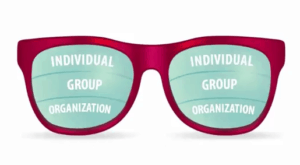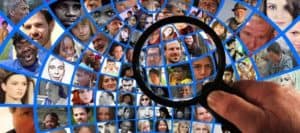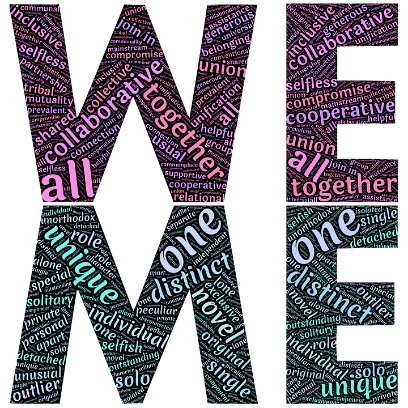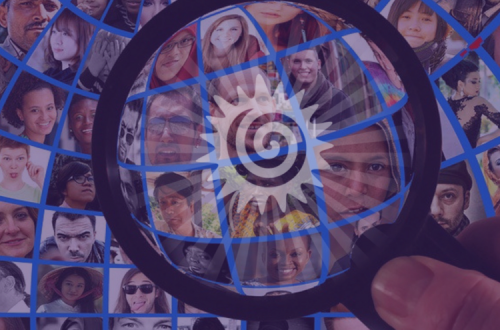Diversity. Everyone’s talking about it. But why aren’t efforts paying off?
Why do even well-intended diversity efforts often fall short of expected outcomes – or do little more than to increase awareness?
That’s a great question. And it’s one I hear a lot.
As you might have guessed, there is no single, quick answer. Really, a full discussion is outside the scope of this short blog post (but if this is a topic you want to explore much more deeply, consider attending my upcoming Virtual Institute on April 26th).
Below, I’ll discuss a key component in the answer to this question, beginning with a memorable metaphor (hint: it involves trifocals)…
A prescription to make your organization’s inclusion efforts more effective.
 What’s the RX? A pair of trifocals. I wear those in real-life, but seriously: when it comes to infusing equity and inclusion into every single aspect of the organization – everyone needs to be wearing them, metaphorically speaking. That’s because we have to be able to interact on three levels:
What’s the RX? A pair of trifocals. I wear those in real-life, but seriously: when it comes to infusing equity and inclusion into every single aspect of the organization – everyone needs to be wearing them, metaphorically speaking. That’s because we have to be able to interact on three levels:
- Individual
- Group
- Organization
Too often, organizations leave the responsibility of creating a more equitable, socially just environment on the shoulders of one or just a few people. In reality, is the responsibility of each and every member…not just a select few.
Start on the individual level to build a foundation of success.
- Change starts with you.
- If you want to change the world, start with yourself.
- Before you try changing someone else, look within first.
How many times have you heard those statements before? Obviously, there is truth to each: it’s essential for each one of us to deepen our capacity to observe and shift our own behaviors – our actions, thoughts, attitudes, unconscious bias, etc.
And it’s just as important to pay attention to what’s happening around us – in the workplace and beyond. I think of the Individual level as necessary, but not sufficient, to do all the work we need to do to create more inclusive, socially just environments.
To incorporate inclusion everywhere within your organization, much more work is needed.
 Early in my career, I used to believe that I needed to focus on and adjust my own attitudes and behaviors. This is a good start, but definitely not a complete solution.
Early in my career, I used to believe that I needed to focus on and adjust my own attitudes and behaviors. This is a good start, but definitely not a complete solution.
In reality, we must also work at the group level to recognize and interrupt the dynamics that are hindering diversity initiatives.
While making sure our own behaviors are inclusive, we also need pay attention to and track those of everyone around us – and to interrupt any microaggressions that may be impacting people from marginalized groups.
We must increase our ability to recognize the experiences of others in groups different from our own – and consistently notice unproductive dynamics that we may have never noticed before.
That concept is what makes work at the group level so important. And if only one or a few people are working towards the organization’s goals of equity and inclusion, think for a minute about all the other people who may be actually reversing those efforts, unintentionally or otherwise.
Diversity efforts don’t stop at the group level, either…
The deep, broad organizational level is where we look at policies and practices and how implicit biases might be embedded in them – and sabotaging diversity efforts. This is the level where we must challenge the organization to painstakingly examine all policies and practices: to analyze every decision, every policy, and every program with an Inclusion Lens.
We need to ask tough questions. We must be willing to pay attention and shift any possible unintended impact of organizational decisions and actions across group membership.
At this level, we must also examine how we can empower everyone to infuse equity and inclusion into their work – and hold each and every member accountable every day.
Every single level – individual, group, and organization – is necessary to create more inclusive, socially just environments within our organizations. But we cannot just address one level; doing so is not sufficient and will not lead to the measurable, lasting change that is needed.
I’d love to have you join me (and bring some of your colleagues, too!) on Thursday, April 26th for an engaging 3-hour Virtual Institute where I’ll go much deeper into this topic. It’s called Creating Inclusive Organizations: Tools to Shift Organizational Culture and Systems, and you can sign up right here.



